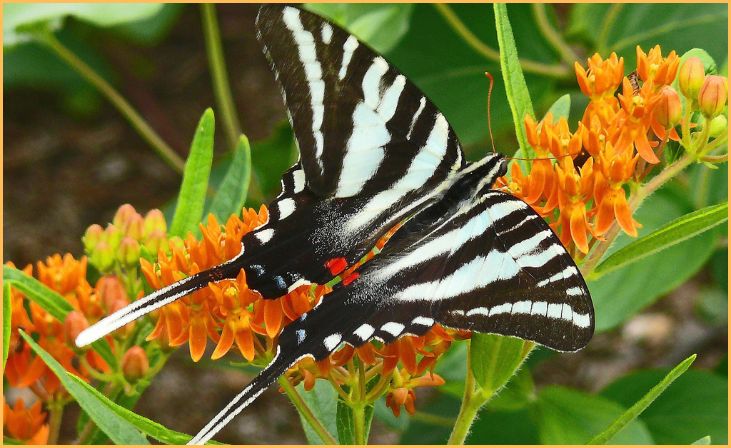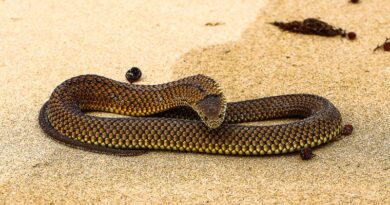Rarest Butterflies in the World – Embark on a mesmerizing journey into the enchanting world of butterflies as we unveil the rarest winged wonders that grace our planet. In this blog, we explore the ethereal beauty and fascinating characteristics of the 10 rarest butterflies globally, each a testament to nature’s creativity. From the remote corners of tropical rainforests to high-altitude mountain ranges, these delicate creatures have captivated researchers and enthusiasts alike.
Join us in celebrating the intricacies of biodiversity and discover the unique stories behind these elusive, breathtaking butterflies. As we delve into their habitats, behaviors, and conservation status, prepare to be awestruck by the fragile magnificence of these rare fluttering jewels.
10 Rarest Butterflies in the World
1. Palos Verdes Blue (Glaucopsyche lygdamus palosverdesensis)

The Palos Verdes Blue, native to the coastal sage scrub habitats of Southern California, stands as one of the rarest butterflies globally. With a wingspan of merely one inch, its exquisite azure-blue wings captivate enthusiasts. Urbanization and habitat destruction have led to a drastic decline in its population. Conservation efforts focus on preserving its unique habitat, combating invasive species, and establishing breeding programs to safeguard this delicate species from extinction.
Also Read: Black Spiders in Connecticut
2. Queen Alexandra’s Birdwing (Ornithoptera alexandrae)
Hailing from Papua New Guinea, Queen Alexandra’s Birdwing holds the title of the world’s largest butterfly. With a wingspan reaching up to a foot, its vibrant green and yellow hues are a sight to behold. Rapid deforestation threatens its survival, as the butterfly relies on specific plant species for larval development. Conservation initiatives involve habitat restoration, community education, and sustainable land-use practices to protect this magnificent species from habitat loss and over-collection.
3. Homerus Swallowtail (Papilio homerus)
Endemic to Jamaica, the Homerus Swallowtail is the largest butterfly in the Western Hemisphere. Its wingspan can exceed six inches, showcasing a striking black and yellow pattern. Deforestation, agriculture expansion, and climate change pose significant threats to its survival. Conservation efforts center on reforestation projects, sustainable agriculture practices, and community engagement to preserve the unique habitats critical for the Homerus Swallowtail’s lifecycle.
4. Atala Butterfly (Eumaeus atala)
The Atala Butterfly, once thought to be extinct, has made a remarkable comeback in southern Florida. With distinctive metallic blue and red hues, it thrives in coontie plants, its exclusive host. Urbanization and habitat destruction led to its decline, but dedicated conservation initiatives, including coontie plant cultivation and habitat restoration, have successfully revived its population. The Atala Butterfly now serves as a symbol of successful community-driven conservation efforts.
5. Zebra Swallowtail (Protographium Marcellus)

Found in the eastern United States, the Zebra Swallowtail is renowned for its distinctive zebra-like black and white wing pattern. Its larvae exclusively feed on pawpaw plants. Habitat loss due to agriculture and urbanization poses a threat to its survival. Conservation strategies involve promoting pawpaw plant conservation, habitat restoration, and public awareness campaigns to ensure the protection of this striking butterfly and its unique ecosystem.
Also Read: Largest Horse Ever Recorded
6. Mission Blue (Aricia icarioides missionensis)
Endemic to the San Francisco Bay Area, the Mission Blue is a visually stunning butterfly with a limited distribution. Urban development and habitat fragmentation have led to a decline in its populations. Conservation efforts focus on restoring native habitats, controlling invasive species, and implementing land-use policies to protect the remaining habitats crucial for the Mission Blue’s survival.
7. Schaus’ Swallowtail (Heraclides aristodemus ponceanus)
Once widespread in Florida, the Schaus’ Swallowtail faced a steep decline due to habitat loss and hurricanes. With its distinctive yellow and black markings, this butterfly became a federally listed endangered species. Conservation initiatives involve habitat restoration, captive breeding programs, and monitoring efforts to ensure the recovery of this rare and beautiful species in its native habitats.
8. Saint Francis’ Satyr (Neonympha mitchellii francisci)
Endemic to a small area in North Carolina, the Saint Francis’ Satyr is a critically endangered butterfly species. Its habitat, the wetlands and savannas, faces threats from urban development and climate change. Conservation actions include habitat restoration, controlled burns to maintain suitable habitats, and research to better understand the ecological needs of this rare butterfly.
9. El Segundo Blue (Euphilotes battoides allyni)
Occupying the coastal dunes of Southern California, the El Segundo Blue faces challenges due to habitat destruction from urbanization and invasive plant species. With a wingspan of around one inch, it relies on specific coastal buckwheat plants. Conservation endeavors involve habitat restoration, plant propagation programs, and public awareness initiatives to protect the delicate ecosystems supporting the El Segundo Blue.
Also Read: Largest Birds on Earth
10. The Malachite (Siproeta stelenes)

Although the Malachite butterfly (Siproeta stelenes) has a broad distribution across Central and South America, its populations are declining due to habitat loss and climate change. With striking green and black patterns, it thrives in tropical forests. Conservation efforts encompass habitat preservation, sustainable land-use practices, and community involvement to ensure the continued existence of this captivating butterfly in its natural environment.
Conclusion
Our exploration of the 10 rarest butterflies globally, we’re left with a profound appreciation for the delicate balance of nature. These winged jewels, though elusive, play a vital role in our ecosystems. As we marvel at their beauty, let’s also reflect on the urgent need for conservation efforts. Together, we can ensure that future generations inherit a world where the iridescence of these rare butterflies continues to grace our skies. Let this journey inspire a collective commitment to preserving the fragile wonders that make our planet extraordinary.
The rarity of these butterflies stems from a combination of factors, including specific habitat requirements, limited geographic distribution, and threats such as habitat loss and climate change.
Supporting conservation initiatives, preserving natural habitats, and raising awareness about the importance of biodiversity are crucial steps in safeguarding the future of these rare butterflies.







